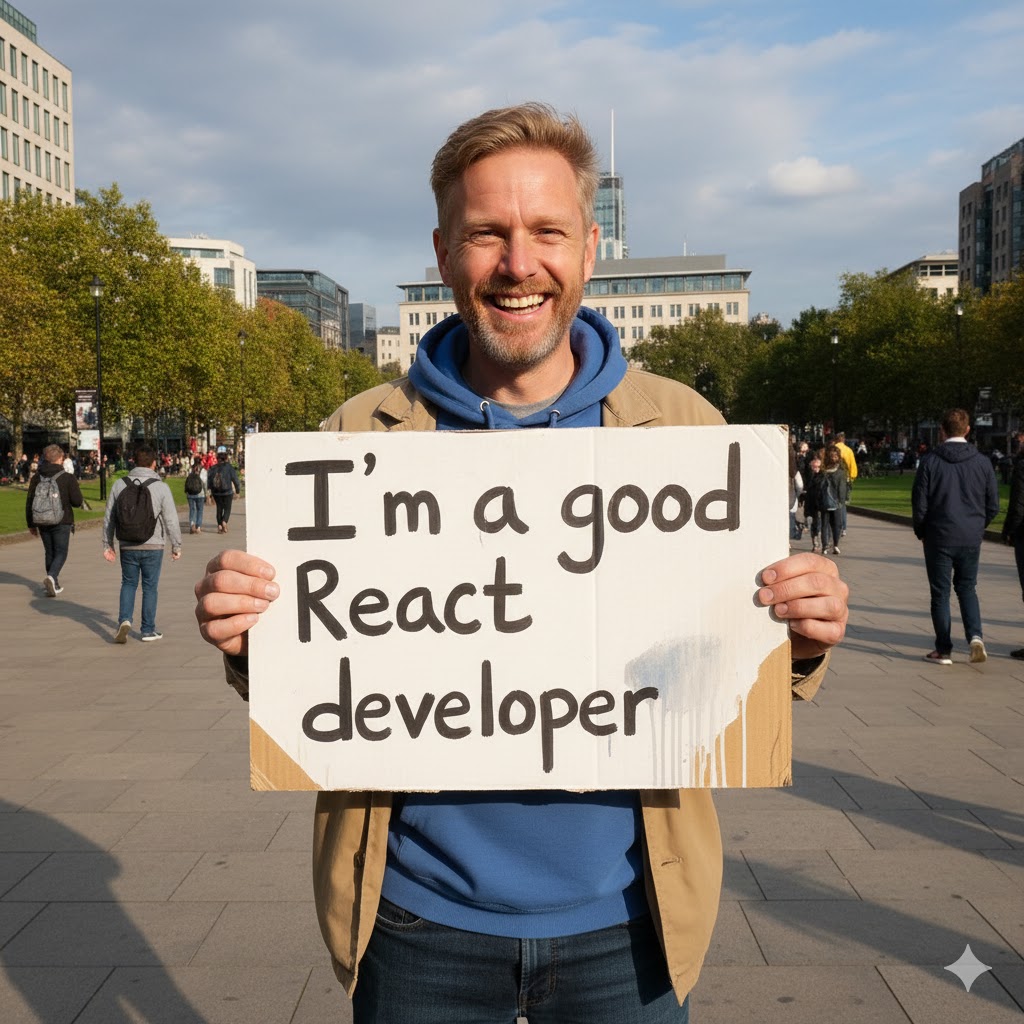If you’re trying to hire a React developer, here’s a truth you need to hear: you’re not just hiring a coder.
You’re choosing the person who will shape your product’s performance, user experience, and scalability.
React developers are behind some of the world’s most engaging digital products — Netflix, Airbnb, Facebook, and Instagram. It’s the go-to JavaScript library for building fast, interactive web apps that users love.
And according to the 2024 Stack Overflow Developer Survey, over 40% of professional developers now use React. That means one thing: competition for top talent is fierce, especially in the United States.
So how do you find the right React developer?
How do you identify someone who doesn’t just code, but cares, someone who can bring your product vision to life?
Let’s break it down step by step.
1. Start with Clarity: Define Exactly What You Need
–
Most companies start hiring before they’re clear on what success looks like. That’s a mistake.
Before you post your first job ad, stop and define your project scope.
Ask yourself:
• Are you building something new from scratch (a greenfield project) or improving an existing product?
• Do you need a front-end specialist focused on UI, or a full-stack React developer who can handle back-end APIs too?
• Is your project a short sprint or a long-term engagement?
• What frameworks and integrations are involved — Next.js, Django, AWS, or Node.js?
• Are you open to remote work, or do you prefer US-based time zone overlap?
This level of clarity saves time, filters out mismatched applicants, and sets you up to attract developers who actually fit your goals.
Pro tip: When you write your job description, describe the problems you want solved, not just the skills you want listed. Great engineers respond to impact, not checklists.
2. Look for the Right Technical Foundation
–
When you hire a React developer, don’t just ask if they “know React.”
Dig deeper.
Here’s what great React engineers truly understand:
Modern JavaScript (ES6+):
They can handle async functions, arrow functions, promises, closures, and destructuring without hesitation.
React Fundamentals:
They know how hooks work: useState, useEffect, useMemo, useCallback, and when to use each.
State Management:
They’re comfortable using Redux, Zustand, MobX, or React Context for scalable state management.
Routing and Navigation:
They use React Router or Next.js routing to handle complex page transitions.
Performance Optimisation:
They understand when to use React.memo, lazy loading, and code splitting.
Tooling and Build Systems:
They’re fluent with Webpack, Babel, or Vite, and know how to optimise builds for production.
Testing:
They write maintainable tests using Jest, React Testing Library, or Cypress.
Version Control:
They use Git professionally — branches, merges, pull requests, and CI/CD pipelines.
Bonus Skills:
TypeScript, GraphQL, TailwindCSS, and Docker — these are signals of modern, industry-aligned developers.
When you see these in their portfolio or GitHub commits, you’ve found a potential winner.
3. Experience Isn’t Just Years: It’s Patterns
–
Experience isn’t about time served. It’s about pattern recognition.
A junior developer can follow tutorials.
An experienced React developer sees problems before they happen.
They’ve debugged complex renders, handled state conflicts, and optimised API calls for performance. They’ve learned what not to do — and that’s invaluable.
Typical US market salaries look like this:
• Junior Developer (1–2 years): $70,000–$90,000/year
• Mid-Level Developer (3–5 years): $95,000–$125,000/year
• Senior Developer (5–8 years): $130,000–$160,000+
• Freelance/Contract: $60–$120/hour
Yes, senior developers cost more — but they write cleaner, faster, and more maintainable code. That means fewer bugs, faster delivery, and lower long-term costs.
You’re not paying for time; you’re paying for outcomes.
4. Review Portfolios Like You’re Investing in a Company
–
A developer’s portfolio is your window into their mind.
Don’t just look for pretty interfaces. Look for thinking.
Examine:
• The variety of projects — dashboards, landing pages, SaaS products.
• Use of modern React features like hooks, Suspense, and Context API.
• Signs of responsive design and accessibility awareness.
• Whether they wrote clear, maintainable code (if GitHub repos are public).
• Contributions to open source or community projects — this signals passion and consistency.
Good developers don’t hide their work. They showcase it proudly.
If you see messy, unstructured code, inconsistent commits, or “toy apps,” proceed with caution.
5. Interview Like a Marketer | Not Just a Coder
–
Most interviews are too mechanical. “What’s JSX?” “What is useEffect?”
Forget that.
When you hire a React developer, you’re hiring problem-solvers, not parrots.
Ask questions that reveal depth:
• “If a component re-renders too frequently, how would you fix it?”
• “Walk me through how you structure a React project from scratch.”
• “Tell me about a time your React app had performance issues — how did you handle it?”
Pay attention to how they think out loud. Do they explain trade-offs? Do they consider scalability, maintainability, and readability?
If they simplify complex topics clearly, they’ll do the same when collaborating with your team.
6. Use Real Coding Tests — Not Trick Questions
–
You can tell a lot from how a developer writes under time pressure.
Give them a real-world challenge instead of a contrived one.
For example:
• Build a small dashboard that fetches API data.
• Implement a custom React hook for debounced search.
• Optimise a large component tree to reduce re-renders.
Then review their work holistically.
Is the code clean? Are variables well-named? Did they think about error handling, performance, and user experience?
This test isn’t just about “does it work” — it’s about how they work.
7. Watch How They Solve Problems
–
A great developer isn’t defined by what they know — it’s how they approach what they don’t.
When faced with a bug or performance issue, do they freeze or break it down logically?
Ask them to explain their debugging process.
Strong answers will include React DevTools, network profiling, console tracing, or performance audits.
Great developers talk about systems, not symptoms.
8. Don’t Ignore Cultural Fit
–
This part often gets overlooked, but it’s critical.
When you hire a React developer, you’re not just hiring skills; you’re hiring someone who’ll collaborate daily with your team.
Look for signs of communication maturity:
• Do they write clear commit messages?
• Are they comfortable giving and receiving feedback?
• Do they ask clarifying questions early?
• Can they work asynchronously without losing momentum?
A technically gifted developer who doesn’t align with your team can stall progress faster than bad code.
9. Budget Smartly and Set Realistic Expectations
–
Let’s be honest — top developers cost more, but they deliver more.
If you’re building a complex SaaS product or enterprise dashboard, budget accordingly.
If you’re validating an MVP, consider a mid-level or contract-based developer who can move fast and deliver quick iterations.
Many US startups use a hybrid model: hire a senior React contractor to architect the project, then bring in junior or offshore developers for ongoing development.
This approach balances cost, quality, and speed perfectly.
10. Move Fast When You Find the Right Developer
–
Top React developers don’t stay on the market for long.
If you’ve found someone who ticks the boxes, move quickly.
Send a professional offer.
Set clear deliverables and milestones.
Establish your communication rhythm.
Onboard them with all the context they need to start strong.
The first week sets the tone for everything that follows.
Bonus: Freelancer vs Full-Time React Developer
–
Here’s the truth: there’s no one-size-fits-all answer.
Freelancers and contractors are perfect for short-term builds, prototypes, or consulting.
Full-time hires are best for products that need ongoing iteration and team integration.
Most successful companies blend both.
They hire a full-stack consultant or contractor for rapid development, and a smaller in-house team for ongoing maintenance.
That hybrid model gives you flexibility and stability.

Let’s Make Your Next Project a Success
Frequently Asked Questions
How do I hire a React developer in the USA?
Start by defining your goals and tech stack. Use trusted hiring platforms like LinkedIn, Toptal, or Upwork, and evaluate both coding and communication skills before committing.
What should I look for when hiring a React developer?
Strong JavaScript knowledge, experience with React hooks, state management tools, and a proven ability to build responsive, user-friendly applications.
How much does it cost to hire a React developer in the US?
In 2025, expect to pay between $95,000 and $160,000 annually for full-time developers or $60–$120/hour for freelancers and contractors.
Should I hire a freelancer or a full-time React developer?
Freelancers are great for short-term projects and MVPs. Full-time developers are ideal for products needing ongoing updates. A hybrid approach often works best.
Why choose a full-stack React developer?
A full-stack developer can manage both front-end and back-end layers, ensuring seamless performance, faster delivery, and reduced dependency on multiple hires.
